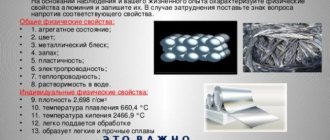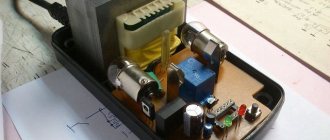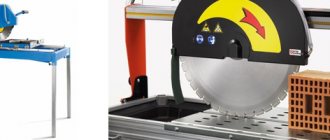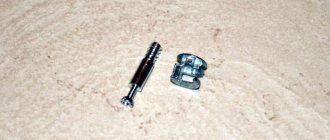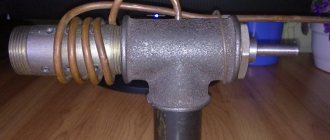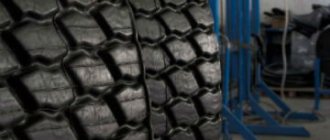The construction of country houses is very popular. People are increasingly using stone products as building materials. They create an alternative to expensive and less durable wood. Today, when building a private house, you can use not only brick, but also various blocks that are cheaper.
During construction, you can significantly save money on purchasing ready-made blocks if you start producing them yourself. In addition, after building the house, all the equipment necessary for production will remain, which can be used for a small private business.
A machine for making cinder blocks with your own hands, which device to choose
A vibrating machine is a device for compacting concrete mixture under pressure using vibration. Properties of a product made in this way:
- dense structure;
- strength;
- wear resistance;
- frost resistance;
- low thermal conductivity;
- light weight with large dimensions;
- low cost.
There is no single standard for a finished design. Machines are divided according to the following characteristics:
- control method (manual or automated);
- productivity (number of blocks produced per 1 cycle);
- type of products (monolithic or hollow);
- convenience.
The vibrating machine must be selected depending on the upcoming volume of construction. When work requires a small amount of building materials or they are needed situationally, then a machine of a simple design with a productivity of 1 block per 1 cycle of work is suitable.
For large-scale construction, as well as for the production of blocks for sale, it is advisable to acquire a unit with which you can make several products in one production cycle. It can be equipped with a device to facilitate the removal of blocks, a lift, etc. This minimizes manual labor while maintaining high productivity.
It is not difficult to make a cinder block machine with your own hands; the materials for this are available and do not require large financial investments.
Forming methods
Factory molds for preparing cinder blocks are made of reinforced concrete or steel. Such parts can easily withstand the weight of a large volume of solution. As for do-it-yourself molds, they are most often made of wood or steel sheets. Such elements largely play the role of special formwork.
To save on raw materials and free time, molds are mainly assembled without a bottom. You can put a simple film under them. Thanks to this method, the entire process of block formation can be significantly simplified. It must be remembered that the forms themselves must be made of perfectly smooth wood parts. The working surface will be a concrete base, a table with a flat and smooth tabletop, or a sheet of iron, which also does not have any defects.
Let's take a closer look at how to make a mold for slag blocks:
- you need to choose sanded boards 14 cm long (the width should be a multiple of this parameter);
- then, using a hacksaw, you need to separate the segments, which will then play the role of transverse partitions;
- then you will need to connect the segments with longitudinal elements to form a rectangular frame;
- Next, you need to cut a sheet of steel or any other material with a smooth surface into separate plates measuring 14x30 cm;
- in the inner part of the resulting structure, cuts are made that will act as grooves, the width of which is equal to the dimensions of the dividing strips;
- then the sections responsible for the separation are fixed in cuts, creating a mold for the production of 3 or more slag blocks.
In order for the resulting container for hardening the solution to serve as long as possible, at the final stage it is recommended to coat both metal and wood structures with oil-based paint. This form is suitable for preparing cinder blocks, the dimensions of which are 14x14x30 cm.
Advantages of making a machine yourself
Advantages of a homemade device:
- A do-it-yourself cinder block making machine costs less than a purchased one.
- Cheaper delivery. If during construction you need to replenish the supply of blocks, you can make the missing building materials directly on the construction site. This is especially convenient if construction is taking place outside the city. You don't have to go to the store to load and unload materials.
- There is no need to buy cinder blocks with a reserve. You can make them with precision down to one piece.
- When producing slag concrete products yourself, it is easy to control the components included in the solution. This is insurance against low-quality building materials. You can be sure that the cinder concrete solution does not contain toxic or other harmful components.
- After completion of construction work, the vibrating machine can be sold.
Features of the material
Cinder block is a building material that has proven itself to be one of the most durable and unpretentious. It has considerable dimensions, especially if you place an ordinary brick next to it. You can make slag blocks not only in a factory setting. Some craftsmen undertake this work at home. If you strictly adhere to the technology, you get high-quality and strong blocks from which you can build a house or any outbuilding.
If a decision has been made to independently produce such products, then a number of its features should be taken into account.
- Cinder block is a fireproof material. It does not ignite itself, and does not intensify an existing flame.
- Really good quality blocks make long-lasting and sustainable homes/outbuildings. Such buildings will not be harmed by harsh climatic conditions, hurricanes, or constant gusty winds.
- Repairing cinder block buildings does not require extra effort and free time - all work can be completed in a short time.
- Cinder blocks are also distinguished by their large sizes, thanks to which buildings made from them can be erected very quickly, which pleases many builders.
- This material is durable. Buildings built from it can stand for more than 100 years without losing their previous characteristics.
- Another feature of cinder block is its soundproofing component. Thus, in dwellings made from this material there are no annoying street noises.
- The production of cinder blocks is carried out using various raw materials, so it is possible to select the optimal products for any conditions.
- What distinguishes cinder block is that it is not subject to attacks by various kinds of parasites or rodents. In addition, it does not rot, so it does not have to be coated with antiseptic solutions and other similar compounds designed to protect the base.
- Despite their decent dimensions, such blocks are light in weight. This feature is noted by many masters. Due to their lightness, these materials can be easily moved from one place to another without calling a crane. However, it must be taken into account that some types of such products are still quite heavy.
- Cinder block is not afraid of low temperatures.
- These blocks are distinguished by their high heat capacity, thanks to which they make cozy and warm homes.
- Temperature fluctuations do not harm the cinder block.
Cinder block buildings are usually decorated with decorative materials to give a more aesthetic appearance.
However, it is very important to remember that the cinder block cannot be covered with ordinary plaster (any “wet” work with this material should not be carried out). You can also use a special decorative block, which is often used instead of expensive cladding. When working with cinder block, it is important to take into account one important feature - this material is characterized by high water absorption, so it must be protected from contact with moisture and dampness
Otherwise, the blocks may collapse over time. Unfortunately, the geometry of the slag blocks leaves much to be desired. That is why, when laying floors from such material, you will have to constantly adjust individual elements - trim them and saw them. Cinder blocks have a relatively low cost.
Homemade machine with a vibrating device: what is required for this
Tools and materials you will need:
- electric welding machine;
- angle grinder for metal work;
- vice;
- locksmith tools;
- electric motor (500-750 W);
- metal sheet and strip (3 mm);
- pipes (75-85 mm);
- bolts, nuts;
- sheet rubber.
Sequencing:
- The size of the form is determined. You can use standard sizes (400x200x200 mm). If blocks of a different size are needed, they are measured and the shape is designed based on the obtained values.
- A drawing is being prepared.
- Using a grinder, the walls of the mold are cut out of metal. The number of side walls is determined by the number of compartments. You can make 1,2 or more identical compartments. The output will be the same number of cinder blocks. The simplest machine contains 1 compartment.
- The side edging is assembled by welding. First you need to grab the metal and make sure that it is connected correctly. After this, weld it completely.
- Metal tubes are cut to the height of the mold. You need to make longitudinal cuts on the sides and form cone-shaped cylinders.
- The cones are welded to the bottom of the matrix. A transverse jumper is made between them, and plugs are placed on top.
- The bottom is welded to the side edging.
- The matrix tray is lined with rubber to protect the bottom edge from damage.
- For stability, you can weld strips from profile pipes with a small cross-section.
- Handles are attached to the side for moving and lifting.
- The thread is installed and the electric motor is attached to it.
- The top cover is screwed in, in which holes are made for the cones. The cover must correspond to the internal dimensions of the matrix.
- An anti-corrosion coating is applied.
- A test run of the installation is performed. It will show you what adjustments need to be made.
Additional Information! A homemade vibrating machine for expanded clay blocks works on the same principle.
Production technology
There are two ways in which slag blocks are made.
- The easy way. In this case, special containers are used, in which the prepared solution acquires the required strength. The blocks dry naturally until the cement is completely set.
- The hard way. With this manufacturing method, vibration devices are used. In many cases, they turn to elements such as a vibrating table or complement the form with a motor with a vibration function.
Let's get acquainted with the technology of making slag blocks using simple forms.
- All prepared ingredients in the required proportions are placed in a concrete mixer, after which they are thoroughly mixed.
- The prepared solution is poured into molds. As for tamping, it is carried out using a hammer - they tap the containers with it so that all the air is removed from the material.
- If the blocks are planned to be made with voids, then bottles of water are placed in each individual part (usually 2 bottles are enough).
The main difficulty with this manufacturing method is the compaction of blocks. If air bubbles remain inside the solution, this will have an adverse effect on the quality of the final product.
As for the more complex method of producing cinder blocks, the following work is carried out here:
- The manufacture of materials in this way should begin by stirring the mixture in a concrete mixer;
- the resulting solution is sent to the mold and then leveled with a trowel;
- then the vibrator is started, and the solution itself is kept in the mold for 20-60 seconds;
- then the equipment must be turned off, the installation is lifted, and then the finished unit is removed.
Specifics of production of building blocks by vibrocompression
A brick press is a device that uses the principle of forming products using a vibrator by creating excess pressure (“load”).
Vibrocompression involves the use of a rigid concrete mixture, which contributes to the production of the most strong, durable and reliable products. Since this technology uses a “weight”, it becomes possible to use coarse aggregates, including materials that are waste from various industries. The use of expanded clay, slag, sawdust, broken bricks, and screenings reduces the cost of manufacturing building blocks. A brick making press involves the use of a rigid matrix, due to which the geometric dimensions of the blocks are more repeatable, which has a positive effect on the speed and quality of construction of load-bearing structures.
Sequence of operations when using vibration compacting equipment:
- the prepared working mixture is poured into a special measured form;
- a measured portion of the mixture enters the molding matrix, where it is compacted under the influence of the punch, while the proportion of air in the semi-dry mixture is reduced by more than half (up to 25%);
- during compaction of the mixture, a vibration mechanism is activated, and the combination of pressure and vibration forms the most dense cement paste, in which the filler particles are placed at a minimum distance from each other, while the air concentration in the mixture is reduced to 3-5%;
Since the working process is accompanied by high pressure on the mixture, various materials, including coarse-grained ones, can be used as fillers
- the impact of the punch lasts no more than a minute, after which the formed product is squeezed out of the matrix using an extruder (as an option, the matrix rises up, and the product remains on a special pallet;
- the resulting blocks are dried (naturally or by steaming).
